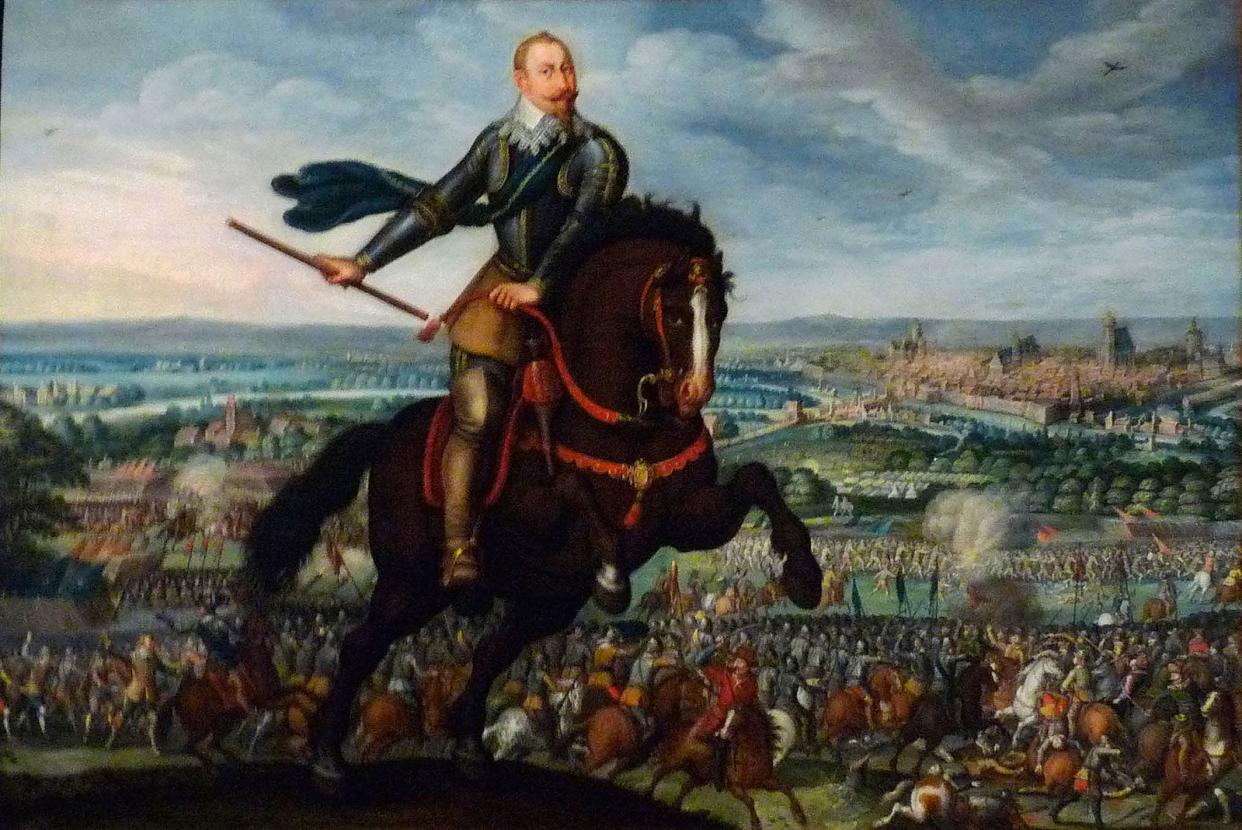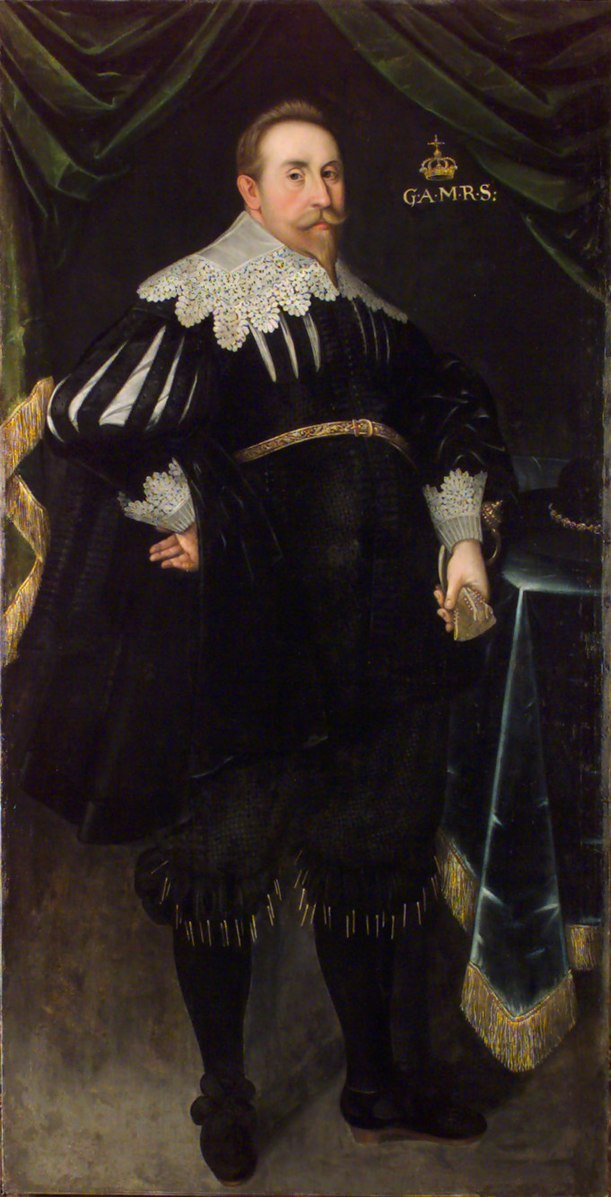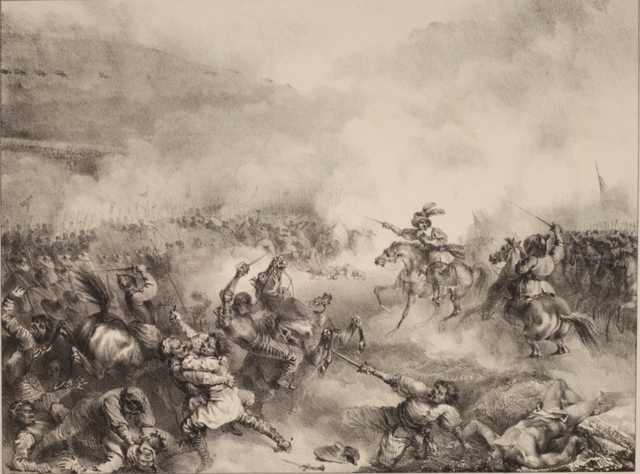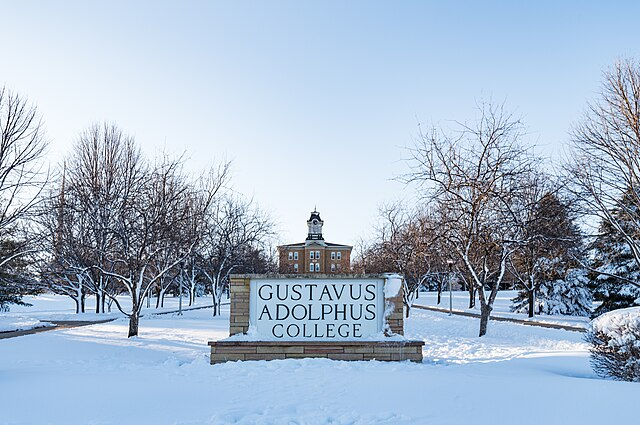Military genius of Gustavus Adolphus, the 'Lion of the North'

- Oops!Something went wrong.Please try again later.
Ahh, Gustavus. The name just sounds like a badass, right? Crowned as the "Lion of the North," Gustavus was no typical king. Born during a chilly December in 1594, his rule shifted Sweden from a side character to a leading role in Europe's complex political drama. On top of that, he switched up the game rules of war, leaving a legacy that resonates even today.
From teen king to tactical genius
Just think, you're 17, probably juggling homework and hormones, and boom! You're king. That was Gustavus' story, a royal teen dropped in the deep end of a war with Denmark after his dad, Charles IX, bid his final goodbye in 1611. Not exactly the sweet 17th birthday gift you'd hope for, huh?
But this young lion didn't just roar; he reigned. With the mantle of leadership weighing on his teen shoulders, Gustavus batted away Danish aggression, silenced internal turmoil, and gave Sweden's economy a much-needed adrenaline shot. In other words, he was multitasking like a boss.
While this initial baptism by fire toughened Gustavus up, it was only the appetizer for the main course of his reign. The young king was just warming up for his star turn on the battlefield.
Battle boss moves

Fast forward to 1631, and Gustavus is now the guy shaking up military strategy at the Battle of Breitenfeld. While others clung to the tried-and-true-but-kind-of-tired massed formations, Gustavus was ready to flip the script. He took a gamble on "linear tactics," favoring compact, nimble infantry units, backed by the punch of easy-to-move artillery.
His high-stakes bet paid off big time. This change-up let his armies flex and adapt on the fly, outmaneuvering the enemy with the finesse of a chess grandmaster. While others were fumbling around a checkerboard, Gustavus was planning moves five steps ahead.
The holy war and the lion's fall
Sure, Gustavus was a savvy tactician with a knack for battlefield wins, but his motivations ran way deeper than the thrill of victory. In 1630, Gustavus decided it was time for Sweden to take the stage in the epic bloodbath known as the Thirty Years' War.
This wasn't a simple land-grabbing exercise. Gustavus was a hardcore Lutheran and for him, the war was a call to spiritual arms. He saw the aggressive Catholic Habsburgs trying to bulldoze Protestantism, and he wasn't about to stand by and watch. Gustavus became the champion of the Protestants, a beacon of resistance against Catholic dominance.
So, Gustavus strapped Sweden into the war machine and set his sights on the Habsburg-controlled Holy Roman Empire. He kicked off his campaign with a bang in 1630, storming Pomerania and pushing back the Imperial forces. His battlefield success didn't just shock his foes; it rallied Protestant states across Europe.

In 1631, Gustavus delivered a crushing blow to the Catholic League at the Battle of Breitenfeld. This victory wasn't just a military win; it was a statement, a signal to the Protestant states that the "Lion of the North"was in their corner.
But in 1632, the cost of this holy war came due. At the Battle of Lutzen, despite a win for the Swedes, Gustavus paid the ultimate price. The king who had taken Sweden to the forefront of the European stage was killed in the heat of battle.
News of Gustavus' death hit Europe like a thunderbolt. The Protestant champion was gone, shaking the alliance dynamics to their core. Gustavus' death didn't just impact the war; it changed the power dynamics in Europe. His absence led to a reshuffling of alliances, a complex game of musical chairs that reshaped the second half of the Thirty Years' War.
Leaving a lion's legacy
While Gustavus Adolphus' life may have been cut short, his influence has proven to be immortal. His tactical innovations on the battlefield didn't just win wars - they changed the whole game.
His game-changing strategies? They've been adopted and adapted by military masterminds throughout history. You've heard of Napoleon Bonaparte, right? Well, even this military prodigy found some inspiration in the Lion of the North's playbook. Gustavus' fondness for mobility and flexibility, his smaller, nimble formations, his integration of artillery and infantry – they all became staple features of modern warfare.
But Gustavus' innovative streak didn't stop at the battlefield. The king had an enduring commitment to reform and learning. Today, Gustavus Adolphus College, nestled in Minnesota, USA, stands as a testament to his dedication to education. Founded by Swedish Lutherans, the college is deeply rooted in its namesake's legacy, fostering a spirit of curiosity and knowledge-seeking that mirrors the king's own values.

But perhaps the greatest testament to Gustavus' legacy is the continued relevance of his strategies. The military principles he pioneered have stood the test of time, influencing military doctrine to this day. The fluidity and adaptability that Gustavus championed are at the core of many contemporary military tactics.
So, while Gustavus may have lived in the 17th century, his influence is far from history. The "Lion of the North" still roars in the principles of modern warfare, the halls of learning, and the spirit of resilience. Gustavus Adolphus wasn't just a king or a warrior; he was a visionary, a game-changer who made ripples that are still felt centuries later.

